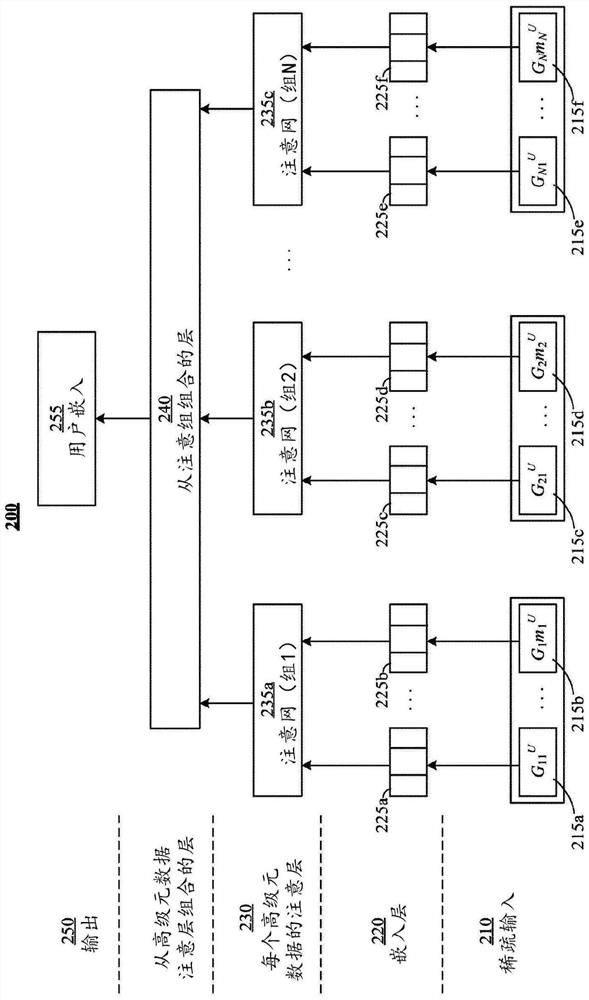Hashing-based effective user modeling
A user and hash code technology, applied in the field of user activity modeling and similarity search, can solve the problem of high computing cost
- Summary
- Abstract
- Description
- Claims
- Application Information
AI Technical Summary
Problems solved by technology
Method used
Image
Examples
Embodiment Construction
[0027] Hashing learning is widely adopted as a solution to approximate nearest neighbor search for large-scale data retrieval in a variety of applications. Applying deep architectures to learn hashing has particular benefits due to its computational efficiency and retrieval quality. However, these deep architectures may not be well-suited to correctly handle data known as "sequential behavior data". Sequential behavioral data may include data types observed in application scenarios related to user modeling. In certain embodiments, to learn a binary hash for sequential behavioral data, the system can capture users' evolving preferences (e.g., measured over extended time periods) or exploit user activity patterns on different time scales (e.g., , by comparing activity patterns on short and long timescales). The disclosed techniques provide novel deep learning-based architectures to learn binary hashes for sequential behavioral data. The effectiveness of the architecture of th...
PUM
 Login to View More
Login to View More Abstract
Description
Claims
Application Information
 Login to View More
Login to View More - R&D
- Intellectual Property
- Life Sciences
- Materials
- Tech Scout
- Unparalleled Data Quality
- Higher Quality Content
- 60% Fewer Hallucinations
Browse by: Latest US Patents, China's latest patents, Technical Efficacy Thesaurus, Application Domain, Technology Topic, Popular Technical Reports.
© 2025 PatSnap. All rights reserved.Legal|Privacy policy|Modern Slavery Act Transparency Statement|Sitemap|About US| Contact US: help@patsnap.com



